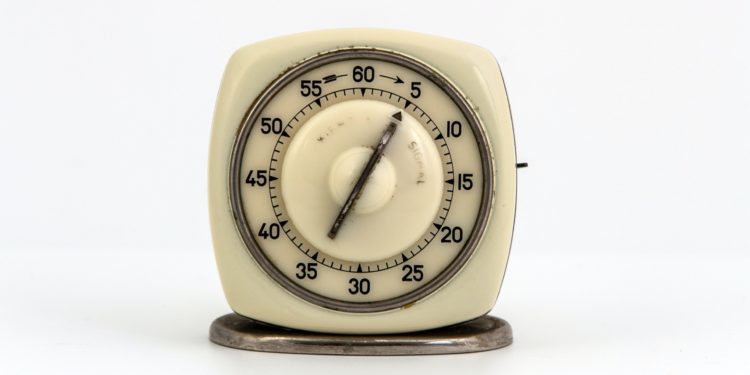
But it’s now February — a new month of that new year. Most wisdom tells us that behavior changes need 28 days of practice before they take hold as a habit. So February, with its 28 days, seems an apt time to dust off those discarded resolutions and start anew. And if you didn’t dive in on Feb. 1, that’s no excuse: Feb. 3 or 7 or 23 is just as good. The key is not the date on the calendar, but the doing of something each day.
To try to help, through the month we’re going to revisit some daily writing practices and perhaps introduce new ones if we bump into them. Let’s start small, which is how resolutions are actually kept: Not 20 pounds in a month, but no cream in your coffee in the morning. Not 10,000 steps a day, but a walk around the block, then around two, then three.
I just finished a weekend immersion writing workshop, via Zoom, with 10 writers who came to the course with a wide range of backgrounds and goals. Not all were or are journalists. Those who were wanted to up their game, or get back into it. One wanted to find what she felt she had missed in a graduate journalism program interrupted by COVID. Many wanted to explore writing memoirs or travel essays. I couldn’t fashion a one-size-fits-all workshop. And I didn’t feel I could ask busy people, already distracted by the demands of life, to spend their entire weekend writing and sharing and critiquing. Whatever we tried needed to be tried in small bites.
Don’t know where to start? Try short free writes with a simple prompt.
A week before the immersion weekend, we had a Zoom meet-and-greet, and I gave them this assignment, which combined daily free writes with sensory reporting/writing:
Sensory reporting (awareness) is a key to compelling storytelling, especially in the realm of narrative, poetry or essay. Humans — whom we write about and for — are sensory creatures. A key way to draw them into a piece about someone other than themselves is to use the senses as connectors.
Senses also have the magical quality of being both specific and universal. They are at the heart of the physics of storytelling: The more individual and unique, the more universal.
WRITING EXERCISE
For each of the next five days, use one of the five senses to do a free-write:
- Monday: SIGHT
- Tuesday: SOUND
- Wednesday: TOUCH
- Thursday: TASTE
- Friday: SMELL
Try the 4 + 4 + 2 method. (Four minutes of writing, then break for 30 seconds. Four minutes of writing, break. Two minutes. Done.) This means you should be spending no more than 12 minutes writing each day. Your free writes are not meant to be finished or polished pieces; they are practice. You may surprise yourself and produce a piece that feels complete. You may open a doorway to an idea or approach that has been eluding you. And you will learn to handle tools of the craft.
This works best longhand: When you begin, keep going. Do NOT pause, scratch out or edit. Just keep your pen moving and moving and moving. Don’t know what to write? Then write: “I don’t know what to write” as many times as you need, and take it from there. (The reason I encourage longhand writing is because it slows you down just enough to be thoughtful without thinking about it. The temptation to delete and rewrite on a keyboard is simply too great. And those of us who write or edit for a living can fall into a professional mode on the keyboard; we write the way our job expects us to write — not the way our story wants to be written.)
Begin with a prompt so you don’t waste time trying to think about what to write. It really doesn’t matter. Don’t know what prompt to use? Then start with some simple variation of one of these:
- I remember the sight (sound, touch, taste, smell) of… (memory)
- OR
- I saw/see (heard, touched, tasted, smelled) … (current time)
Pick a moment — often a description or quick scene — and go from there. Be specific and, as much as possible, factual. We are writing nonfiction. Stuff taken from real life is often more compelling than anything we can make up. And even if your goal is to write fiction, you need to plug into the senses of the real world.
Some of the senses will work better for you than others. Again, it doesn’t matter. What does is that you tune yourself into the world — pay attention — and describe it as concretely and evocatively as you can.
Two days in, I was getting emails of distress: Am I doing this right? I started with a sense but kept getting philosophical — what am I doing wrong? How long is my free write supposed to be?
 I did my best to ease their concerns: There is no right or wrong, there is just writing. But I did worry that the exercise was a bust.
I did my best to ease their concerns: There is no right or wrong, there is just writing. But I did worry that the exercise was a bust.
Then we gathered for the weekend, dug deeper into the soul and tools of writing, did two more free writes with different prompts, and each of them read their free-write of choice. The best word I can use to describe my reaction to their work is humbled.
I asked them to comment on what the exercises taught them. Here are three, shared with permission:
I’m pretty Type A, so free writing does not come naturally to me (as an example: I did pre-reporting to check facts about the stuff I knew I wanted to free write about…). So I was surprised when setting a timer and just letting loose actually worked. Usually, I’m way too absorbed in trying to write something “good.” Free writing let me get out my shitty first draft without wasting time editing as I went along. There will be time to go back and rework — this helped me just get it out quickly. Writing is a practice; I won’t improve unless I work these muscles regularly. Free-writing can help me do that, in about 10 minutes a day. ~ Kristin Kellogg, communications manager at a nonprofit
I absolutely loved the free writing, using the five senses as prompts. When I’m working on a story or an essay, it’s easy to write down details for sight and sound, but I don’t usually give a lot of love to the other senses. I forget about them. I had an interview in the latter part of last week with a man who grew up working at a fertilizer factory on Long Island, and I found myself asking him if the plant smelled. I’m not sure I would’ve thought to ask him that if I hadn’t just done a free write on smell. ~ Caren Chesler, freelance science journalist
I expected and did experience significant discomfort in these assignments. Free-writing removes the structures we cling to that we think keep us safe and accepted. By taking away the guardrails, my thoughts started fast-walking me alongside a cliff, and damn if it wasn’t windy out there. When I felt myself stepping back by disengaging or purposely not writing what was on my mind, I realized I was either trying to make myself look good or avoid looking bad. Like anyone, I don’t want to be misunderstood or mocked. It’s scary to push through and accept that I can’t prevent, predict or ply a reader’s reaction. But when I gave myself permission to write some truly shitty sentences and to stop expecting judgment, then my free-writing revealed much more than my insecurities. ~ Mike Wells, freelance journalist and marketing content writer
Confession: I have never been comfortable with free writing myself, or journaling of any kind. Or maybe, as a daily newspaper reporter for much of my career, I was free writing every day; we just called it writing on deadline.
It’s the dailiness that builds the muscles, the discipline of actually writing rather than just thinking about writing, and having something — a news event or a simple prompt — to write about.


